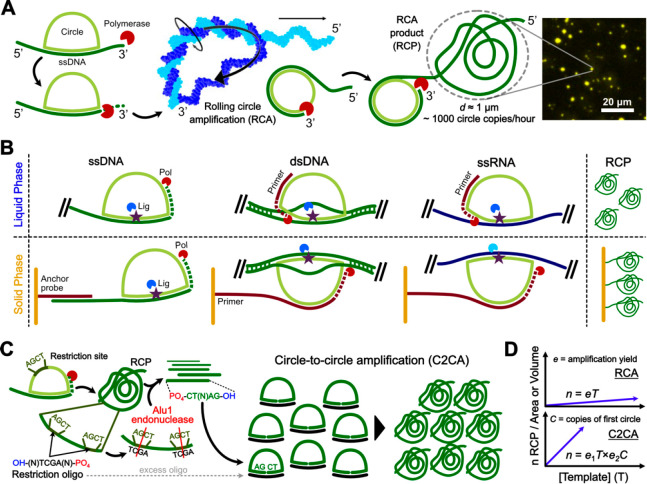Figure 2.
Summary of RCA mechanism and assay design strategies. (a) RCA mechanism upon PLP ligation. The polymerase molecule is larger than the circularized PLP at the scale represented in the figure. (B) RCA strategies after ligation of a PLP to ssDNA, double stranded DNA (dsDNA), or single stranded RNA (ssRNA) in solution or primed on a solid surface such as a glass slide or a microbead. (C) C2CA schematics. (D) Key variables correlating the concentration (liquid phase) or total density (solid phase) of RCPs with increasing template concentrations. The amplification yield “e” is a factor ranging from 0 to 1 quantifying the fraction of template-PLP pairs translated into RCPs. C is the total number of concatenated reverse complement circle copies in the first RCP. Molecular model in (A) was adapted with permission from ref (27). Copyright 2006 Springer Nature.

